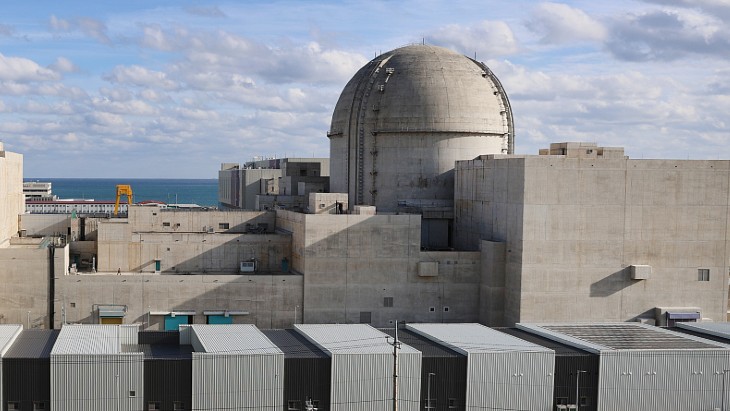Korea Hydro & Nuclear Power (KHNP) has suspended design work for the planned units 3 and 4 at the Shin Hanul nuclear power plant until South Korea's new government announces its policy on the construction of new reactors. During his presidential election campaign, Moon Jae-in said he would scrap plans for new reactors.
.jpg) |
| An artist's impression of how Shin Hanul 3 and 4 would appear (Image: KHNP) |
KHNP announced yesterday that it had instructed Kepco Engineering & Construction - which signed a design contract in March 2016 - to suspend work for the two planned APR1400 units at Shin Hanul. This work will be suspended, the state-owned utility said, until the government policy on the construction of new nuclear power plants is confirmed. However, work towards licensing the new units is to continue.
On 9 May, Moon Jae-in of the centre-left Democratic Party of Korea was voted South Korea's new president, following Park Geun-hye's impeachment in March. Moon was one of seven candidates in the election who signed an agreement in March for a "common policy" for phasing out the country's use of nuclear energy. During his election campaign, Moon said he would scrap plans for new reactors while immediately closing Wolsong 1. Moon also said he will close ten old coal-fired plants earlier than scheduled.
A KHNP official told the Dong-A Ilbo news service, "We have found it difficult to push for the designing project under the circumstances where the government policy (towards nuclear power plants) is fluid."
In November 2014, KHNP signed an agreement with Ulchin County to build Shin Hanul 3 and 4. The company applied for a construction licence for the units in January 2016. Site preparation for the two units is scheduled to begin this month, with commercial operation of unit 3 scheduled for December 2022 and unit 4 following a year later.
Two APR1400 units are under construction as units 1 and 2 of the Shin Hanul site. Those 1350 MWe pressurised water reactors are expected to enter service in April 2018 and February 2019, respectively.
Researched and written
by World Nuclear News




_72306.jpg)


_49562.jpg)





